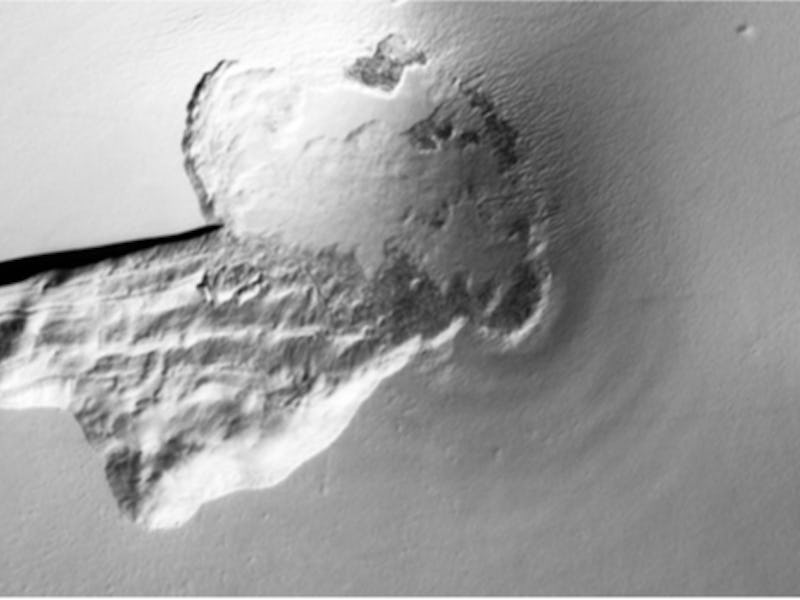Scientists Find Eight New Locations on Mars Where We Might Harvest Water
They could be a game-changer for deciding where to start a colony on the red planet.

Few space discoveries in recent years have matched the excitement and and hooplah sparked by the discovery of liquid water on the surface of Mars, but the truth is, future human colonists will find little of practical use from those reserves. There’s not much water there to begin with, it only appears seasonally, it’s briny as hell, and it’s located in areas that are staggeringly difficult to get to. When it comes to actually harvesting water on Mars, we’re going dig for ice.
And it just so happens, there are plenty of spots where we can do that. A new study published Thursday in Nature outlines the discovery of eight new sites that possess vast deposits of water ice over 100 meters thick, located in depths as shallow as one to two meters below the surface of the planet.
The new findings are thanks to a more detailed investigation of images collected by the Mars Reconnaissance Orbiter, focused around erosion at steep, pole-facing slopes that exposed signs of the water ice deposits. The fact that the surface fractures occurred at steep angles suggests the ice is pretty robust and cohesive. Besides potential use for harvesting by future colonists, the deposits could be incredibly useful in studying the geological and climatic history fo the planet. The lack of craters around the sites makes the researchers think these ice deposits are relatively new.
To be fair, ice on Mars is far from a rare treat. One-third of the Martian surface is thought to possess shallow ground ice. But we know of few places where the ice is this thick and strong. The new study is particularly useful in helping demonstrate the ice deposits on a three-dimensional scale.
“The scarps exposing ice are likely expanding due to sublimation,” Colin Dundas, a researcher geologist with the U.S. Geological Survey, tells Inverse. Sublimation refers to the evaporation of ice into vapor without forming liquid — not too surprising when you consider the extreme fluctuations in temperatures on the planet. The team interprets the scarps as originated from snow deposition, which in turn, Dundas thinks, should help flesh out more about the environmental conditions that defined Mars in the past.
Besides just the sheer scientific history of Mars that can be gleaned from these sites, they could be a powerful influence on where NASA, SpaceX, or other parties choose to land humans and build a colony. Water is essential not just because we need to drink it to stay alive and use it to grow food, but it’s also a potentially valuable form of rocket fuel. Although some like SpaceX CEO Elon Musk are pushing for methane as a sustainable form of rocket propellent to be generated on Mars, there are many more engineers interested in finding a way to make derive liquid oxygen and hydrogen from water and use that as fuel for space travel.
If the new water ice sites prove to be viable for drilling, they could become the next best location choices for starting a colony.